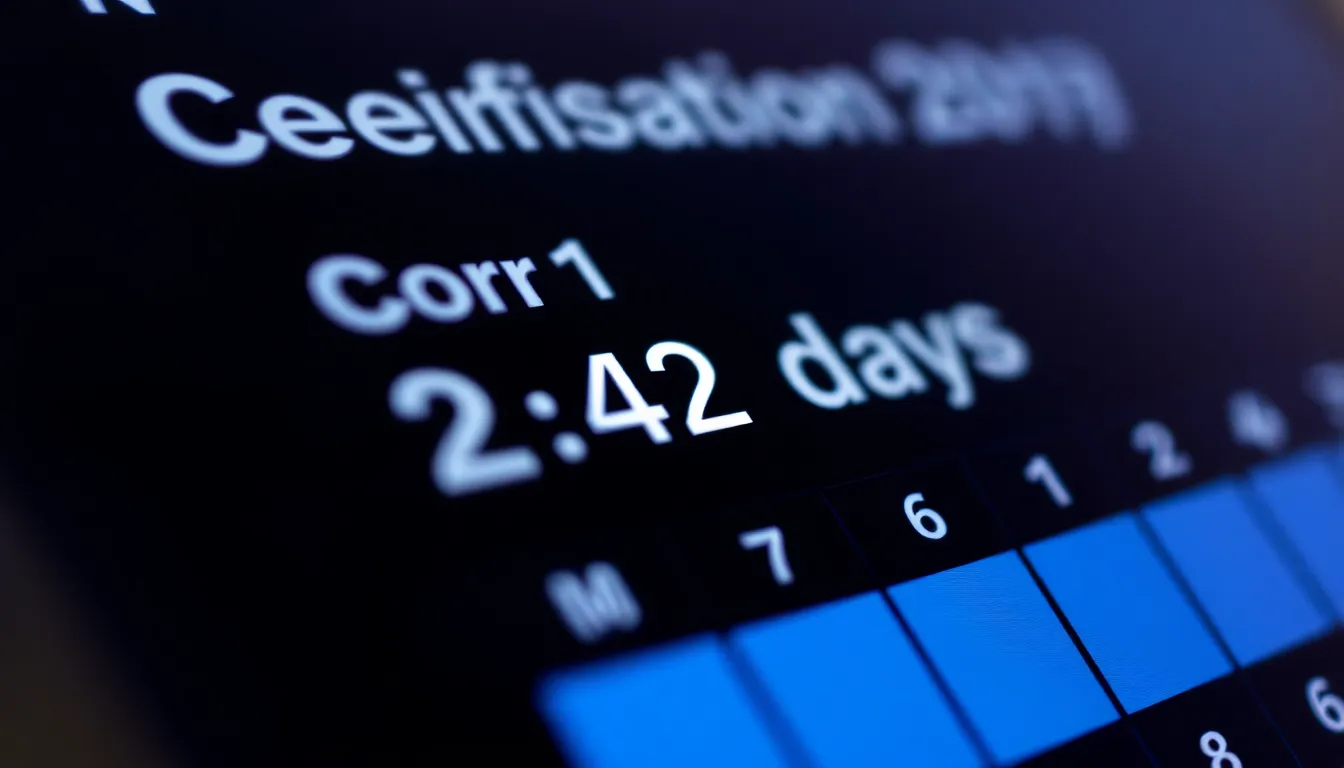Ever found yourself wondering what day it was six weeks ago? If you have, you’re not alone. Time can feel like a sneaky thief, slipping through our fingers while we’re busy juggling work, life, and that ever-growing to-do list. It’s like trying to remember what you had for breakfast last Tuesday—almost impossible, right?
Table of Contents
ToggleUnderstanding the Concept of Time Calculation
Understanding time calculation helps individuals navigate their daily lives more effectively. Keeping track of dates aids in managing schedules, deadlines, and appointments.
The Importance of Date Calculation
Calculating specific dates ensures proper planning for events. Awareness of past dates influences decisions and prioritizes tasks. Knowing a date six weeks ago, for example, allows for reflection on events or deadlines. Individuals use date calculations to assess progress in personal or professional projects. Accurate date tracking fosters accountability and improves time management.
Methods for Calculating Dates
Various methods exist for calculating dates accurately. Many people use digital calendars, which automatically adjust for weekends and holidays. Counting backward on a physical calendar provides a visual representation of time passage. Some utilize online date calculators that streamline the process and reduce errors. Knowledge of basic math also plays a role; subtracting 42 days from today yields the date six weeks ago. Using these methods can simplify time management and enhance overall planning.
Calculating Six Weeks Ago

Calculating the date six weeks ago involves a straightforward process. First, identify the current date and note it down. Then, count back 42 days since each week has seven days. This simple math provides the exact date from six weeks prior.
Step-by-Step Calculation
- Determine today’s date.
- Subtract 42 days from that date.
- Adjust for month changes if necessary.
- Reach the final result.
This method works for any date and strengthens the understanding of timeframes.
Tools and Resources for Date Calculation
Various tools aid in calculating past dates. Digital calendars offer intuitive interfaces for date adjustments. Online date calculators provide quick results, requiring users to input a starting date. Mobile apps often include features, making date calculations accessible anytime. Physical calendars remain popular for those who prefer traditional methods. These resources simplify date calculations and help maintain organization.
Real-Life Applications of Knowing the Date
Understanding past dates has practical implications for daily life and planning. Knowing the date six weeks ago assists in making informed decisions related to schedules and deadlines.
Planning and Scheduling
Effective planning hinges on accurate date awareness. Scheduling tasks around critical deadlines requires knowledge of previous dates. Recognizing a date from six weeks prior aids in project timelines, especially when managing multiple commitments. Accurately determining timeframes helps individuals meet obligations and adjust plans smartly. Whether it’s a work assignment or event, knowing past dates enables better time allocation. Failure to track prior dates can lead to missed opportunities or overlooked responsibilities.
Historical References
Historical analysis often depends on understanding specific dates. Important events, milestones, or anniversaries hold significance when viewed in context. Identifying the date six weeks ago connects to trends or developments in various fields. Events in politics, culture, and science often resonate more deeply when properly contextualized. Accurate historical referencing fosters deeper discussions and informed opinions. Grasping past dates also encourages critical reflection on how history influences present situations. It’s crucial to appreciate time’s flow when analyzing cultural or historical shifts.
Common Mistakes in Date Calculation
Date calculation often leads to misunderstandings, especially regarding the distinction between weeks and days. Misjudging one week as multiple days can throw off the entire calculation. For instance, six weeks equals 42 days, but mixing these values complicates accuracy. Forgetting to account for month changes creates additional confusion as well. When a current date is the end of a month, the transition to a new month can affect the total count if not properly managed.
Data entry errors frequently contribute to inaccuracies in date calculations. Inputting the wrong date into a calendar or calculator leads to unexpected results. It is vital to double-check entered information since one incorrect digit can change the entire timeline. Misalignment between the starting date and calculations further complicates matters. Relying on digital tools to assist with date entry helps reduce human error, ensuring clarity in planning and scheduling. Accurate recording becomes essential for effective time management.
Understanding the date six weeks ago is more than just a simple calculation; it plays a vital role in effective time management. By mastering date calculations individuals can enhance their planning abilities and make informed decisions regarding their schedules.
Utilizing tools like digital calendars and online calculators can streamline this process and minimize errors. As people navigate their busy lives being aware of past dates not only aids in meeting deadlines but also fosters a deeper appreciation for the passage of time. This awareness ultimately empowers individuals to allocate their time wisely and stay organized in both personal and professional realms.








